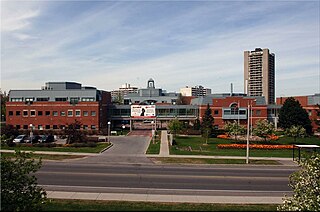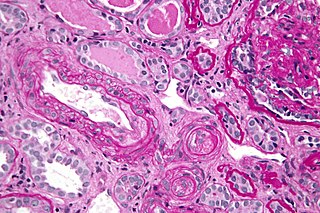
The green ribbon can have a variety of symbolic meanings.

The green ribbon can have a variety of symbolic meanings.
Mitochondrial disease awareness is represented by a green ribbon. [1] Mitochondrial disease (mito) is a debilitating genetic disorder that robs the body's cells of energy, causing multiple organ dysfunction or failure and potentially death. There are many forms of mitochondrial disease; it is highly complex and can affect anyone of any age. Mitochondrial disease can cause any symptom in any organ at any age. There are currently no cures and few effective treatments.[ citation needed ]
Cerebral palsy (CP) awareness is represented by a green ribbon. [2] CP is one of the most common childhood disabilities and represents a wide range of fine and gross motor function impairment, mental delay and other combinations caused by injury to the brain through trauma, lack of oxygen at birth or another cause.[ citation needed ]
Mental health awareness is represented by a green ribbon. [2]
Kidney disease and kidney cancer awareness are another cause represented by the Green Ribbon. [3] [2] People who have kidney disease, are on dialysis, have received a kidney transplant, [4] or who are living kidney donors wear the Green Ribbon to help raise awareness about the condition. March is kidney awareness month and those who are affected by the kidney disease or would like to support the cause and raise awareness, are encouraged to wear the ribbon all month long.[ citation needed ]
In 17th century England during and after the English Civil War the wearing of a sea-green ribbon symbolized affiliation with the ideals of the Levellers and later in the century with radical Whiggism. [5] The green ribbon and sprigs of rosemary were symbols of support for the Levellers during the English Civil War and English Interregnum. At the funeral of Thomas Rainsborough (a Member of Parliament and also a Leveller leader who had spoken at the Putney Debates) there were thousands of mourners wearing the Levellers' ribbons of sea-green and bunches of rosemary for remembrance in their hats, as there were the next year, 1649, at the funeral of Robert Lockyer a New Model Army Agitator executed by Oliver Cromwell for mutiny.[ citation needed ]
The Green Ribbon Club was one of the earliest of the loosely combined associations which met from time to time in London taverns or coffee-houses for political purposes in the 17th century. It had its meeting place at the King's Head tavern at Chancery Lane End, so was known as the King's Head Club. It seems to have been founded about the year 1675 as a resort for members of the political party hostile to the court. As these associates were in the habit of wearing in their hats a bow, or bob, of green ribbon, as a distinguishing badge useful for the purpose of mutual recognition in street brawls, the name of the club was changed, about 1679, to the Green Ribbon Club. The 'Green Ribbon' was the badge of The Levellers in the English Civil Wars in which many of the members had fought and was an overt reminder of their radical origins. [5]
In 1998, Margaret Bruce, a Pastoral Associate at St. John the Evangelist Catholic Church in North Dakota, sought a way to support farm families and came up with the idea of a green ribbon and a card that read "We care through prayer." Around the same time, the National Catholic Rural Life Conference (NCRLC) began receiving emergency calls from farm families in stress and saw that the situation was getting worse across the country. In November 1998, NCRLC launched the Green Ribbon Campaign at their 75th anniversary meeting. They developed and began to disseminate rural crisis packets to help parishes deal with the growing rural crisis. [6]
In the UK, in November 2008, [7] a Manchester-based support group for people living with or being affected by the HIV-virus; launched a campaign called Body Positive North West, [8] using a green ribbon as their symbol. The aim is to raise awareness of 60 second HIV testing and encourage more people to get themselves screened for HIV, as research suggests that over a third of all HIV-infected people in Britain, are themselves unaware of this. [9]

Green ribbons have been used to promote awareness for many diseases and causes. [1] [15] [16]

A disease is a particular abnormal condition that adversely affects the structure or function of all or part of an organism and is not immediately due to any external injury. Diseases are often known to be medical conditions that are associated with specific signs and symptoms. A disease may be caused by external factors such as pathogens or by internal dysfunctions. For example, internal dysfunctions of the immune system can produce a variety of different diseases, including various forms of immunodeficiency, hypersensitivity, allergies, and autoimmune disorders.

Urology, also known as genitourinary surgery, is the branch of medicine that focuses on surgical and medical diseases of the urinary-tract system and the reproductive organs. Organs under the domain of urology include the kidneys, adrenal glands, ureters, urinary bladder, urethra, and the male reproductive organs.

A birth defect, also known as a congenital disorder, is an abnormal condition that is present at birth regardless of its cause. Birth defects may result in disabilities that may be physical, intellectual, or developmental. The disabilities can range from mild to severe. Birth defects are divided into two main types: structural disorders in which problems are seen with the shape of a body part and functional disorders in which problems exist with how a body part works. Functional disorders include metabolic and degenerative disorders. Some birth defects include both structural and functional disorders.
Encephalopathy means any disorder or disease of the brain, especially chronic degenerative conditions. In modern usage, encephalopathy does not refer to a single disease, but rather to a syndrome of overall brain dysfunction; this syndrome has many possible organic and inorganic causes.
Immunodeficiency, also known as immunocompromisation, is a state in which the immune system's ability to fight infectious diseases and cancer is compromised or entirely absent. Most cases are acquired ("secondary") due to extrinsic factors that affect the patient's immune system. Examples of these extrinsic factors include HIV infection and environmental factors, such as nutrition. Immunocompromisation may also be due to genetic diseases/flaws such as SCID.

Kidney disease, or renal disease, technically referred to as nephropathy, is damage to or disease of a kidney. Nephritis is an inflammatory kidney disease and has several types according to the location of the inflammation. Inflammation can be diagnosed by blood tests. Nephrosis is non-inflammatory kidney disease. Nephritis and nephrosis can give rise to nephritic syndrome and nephrotic syndrome respectively. Kidney disease usually causes a loss of kidney function to some degree and can result in kidney failure, the complete loss of kidney function. Kidney failure is known as the end-stage of kidney disease, where dialysis or a kidney transplant is the only treatment option.
Inborn errors of metabolism form a large class of genetic diseases involving congenital disorders of enzyme activities. The majority are due to defects of single genes that code for enzymes that facilitate conversion of various substances (substrates) into others (products). In most of the disorders, problems arise due to accumulation of substances which are toxic or interfere with normal function, or due to the effects of reduced ability to synthesize essential compounds. Inborn errors of metabolism are often referred to as congenital metabolic diseases or inherited metabolic disorders. Another term used to describe these disorders is "enzymopathies". This term was created following the study of biodynamic enzymology, a science based on the study of the enzymes and their products. Finally, inborn errors of metabolism were studied for the first time by British physician Archibald Garrod (1857–1936), in 1908. He is known for work that prefigured the "one gene-one enzyme" hypothesis, based on his studies on the nature and inheritance of alkaptonuria. His seminal text, Inborn Errors of Metabolism, was published in 1923.

Awareness ribbons are symbols meant to show support or raise consciousness for a cause. Different colors and patterns are associated with different issues.

Pediatric surgery is a subspecialty of surgery involving the surgery of fetuses, infants, children, adolescents, and young adults.

Canadian Blood Services is a non-profit charitable organization that is independent from the Canadian government. The Canadian Blood Services was established as Canada's blood authority in all provinces and territories except for Quebec in 1998. The federal, provincial and territorial governments created the Canadian Blood Services through a memorandum of understanding. Canadian Blood Services is funded mainly through the provincial and territorial governments.
Autotransplantation is the transplantation of organs, tissues, or even particular proteins from one part of the body to another in the same person.

Thrombotic microangiopathy (TMA) is a pathology that results in thrombosis in capillaries and arterioles, due to an endothelial injury. It may be seen in association with thrombocytopenia, anemia, purpura and kidney failure.

Reproductive medicine is a branch of medicine concerning the male and female reproductive systems. It encompasses a variety of reproductive conditions, their prevention and assessment, as well as their subsequent treatment and prognosis.
Congenital nephrotic syndrome is a rare kidney disease which manifests in infants during the first 3 months of life, and is characterized by high levels of protein in the urine (proteinuria), low levels of protein in the blood, and swelling. This disease is primarily caused by genetic mutations which result in damage to components of the glomerular filtration barrier and allow for leakage of plasma proteins into the urinary space.

Esophageal diseases can derive from congenital conditions, or they can be acquired later in life.

Cranial nerve disease is an impaired functioning of one of the twelve cranial nerves. Although it could theoretically be considered a mononeuropathy, it is not considered as such under MeSH.

Kaposi's sarcoma (KS) is a type of cancer that can form masses in the skin, in lymph nodes, in the mouth, or in other organs. The skin lesions are usually painless, purple and may be flat or raised. Lesions can occur singly, multiply in a limited area, or may be widespread. Depending on the sub-type of disease and level of immune suppression, KS may worsen either gradually or quickly. Except for Classical KS where there is generally no immune suppression, KS is caused by a combination of immune suppression and infection by Human herpesvirus 8.
Onconephrology is a specialty in nephrology that deals with the study of kidney diseases in cancer patients. A nephrologist who takes care of patients with cancer and kidney disease is called an onconephrologist. This branch of nephrology encompasses nephrotoxicity associated with existing and novel chemotherapeutics, kidney disease as it pertains to stem cell transplant, paraneoplastic kidney disorders, paraproteinemias, electrolyte disorders associated with cancer, and more as discussed below.
in April 2004, the Kidney Cancer Association in the United States and Kidney Cancer United Kingdom adopted a green ribbon campaign to raise awareness of kidney cancer;